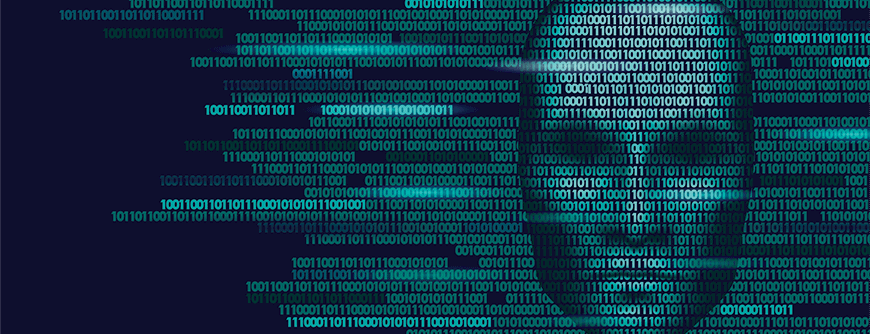TI sombra é o uso de software, dispositivos, sistemas ou aplicativos de TI por departamentos ou indivíduos dentro de uma organização sem o consentimento explícito ou o conhecimento do departamento de TI dessa organização. O uso de aplicativos de TI sombra cresceu consideravelmente nos últimos anos, principalmente devido à proliferação do trabalho remoto e ao uso de serviços e aplicativos baseados em nuvem. Embora a TI sombreada possa acelerar a produtividade e a inovação, ela também pode apresentar sérios riscos de segurança e problemas de conformidade, especialmente quando os dados são armazenados em locais dos quais a TI não está ciente.
Exemplos de aplicativos e atividades de TI sombra
Qualquer aplicativo usado para fins comerciais sem envolver o departamento de TI da organização pode ser considerado um aplicativo de TI paralelo.
Os aplicativos de TI sombra se enquadram em quatro categorias principais:
- Aplicativos baseados em nuvem que os usuários acessam diretamente pela rede corporativa.
- Aplicativos baseados em nuvem que os usuários acessam por meio de aplicativos SaaS, como Microsoft Office 365 ou Google Workspace.
- Software pronto para uso comprado por um departamento ou usuário final e carregado no sistema (agora menos comum).
- Software desenvolvido sob medida em execução no laptop corporativo de um indivíduo.
Exemplos de atividades de TI sombreadas incluem:
- O download e o uso não autorizado de aplicativos de fluxo de trabalho ou produtividade, como Trello ou Asana.
- Criação e uso de cargas de trabalho na nuvem configuradas por meio de contas ou credenciais pessoais ou de departamento.
- Compra e/ou uso não autorizado de aplicativos SaaS de terceiros ou outras assinaturas de serviços de nuvem que não estejam sendo monitoradas pelo departamento de TI de uma organização.
- Usar plataformas de mensagens pessoais ou aplicativos de comunicação, como WhatsApp ou Signal, para comunicação relacionada ao trabalho.
- Usar contas de e-mail pessoais para conduzir negócios.
- Traga seu próprio dispositivo (BYOD) não autorizado.
Acompanhe os riscos de TI
É quase impossível proteger seus dados se os funcionários os estiverem armazenando em locais fora do controle da sua empresa. Seu departamento de TI também não sabe qual ou quanto dos dados de clientes da sua empresa está em risco se eles não souberem onde esses dados estão.
Assim, os principais riscos de segurança da TI-sombra são:
Perda de dados
Como sua empresa não pode acessar dados armazenados em contas pessoais ou em laptops pessoais, eles perderão esses dados quando o funcionário sair ou for demitido. Além disso, como os dados nessas contas pessoais não estão sujeitos a políticas e procedimentos corporativos, eles podem não ter backup, arquivamento ou criptografia adequados de acordo com a política da empresa.
Visibilidade e controle reduzidos
O Shadow IT apresenta problemas graves com visibilidade e controle pelo mesmo motivo que apresenta problemas graves com perda de dados: Você não consegue proteger o que não consegue ver. O aumento do uso do autoprovisionamento pode acelerar a produtividade e a integração, mas também descentraliza o provisionamento de recursos, fazendo com que a TI tenha problemas para saber o que está acontecendo, com quem e onde. Isso também leva a não ter uma única fonte confiável de verdade para os dados ou ter uma fonte de verdade comprometida ou incompleta para os dados.
Maior vulnerabilidade a ataques cibernéticos
Cada instância da TI sombreada expande a superfície de ataque de uma organização e, como os aplicativos de TI sombreada não são visíveis para a TI, eles também não são protegidos pelas soluções de cibersegurança da empresa. Além disso, os usuários de aplicativos de TI sombra frequentemente usam credenciais e senhas fracas que os criminosos cibernéticos podem explorar facilmente para obter acesso a uma rede corporativa.
Aumento dos custos devido à não conformidade
A Shadow IT frequentemente apresenta custos indiretos a uma organização na forma de multas e penalidades regulatórias, além de danos à reputação no caso de uma violação de dados. Além disso, embora alguns funcionários possam recorrer à TI sombra como uma maneira de reduzir custos, o uso de longo prazo de aplicativos e serviços de TI sombra, como armazenamento de dados, muitas vezes não é econômico em grande escala.
Como gerenciar e mitigar riscos de TI sombreados
Qual é a principal causa da TI sombra?
Os funcionários não têm o que precisam para fazer seu trabalho da melhor maneira possível.
Da mesma forma, conforme as instâncias de TI sombreadas proliferam, a responsabilidade de gerenciá-las e mitigá-las é das pessoas responsáveis por garantir que os funcionários tenham acesso a todas as ferramentas, recursos e serviços necessários para fazer bem o trabalho.
Para reduzir os riscos de TI, as organizações podem:
- Treine os funcionários sobre o uso seguro e adequado de todas as ferramentas e tecnologias
- Aplique regras e protocolos sobre provisionamento para novos serviços
- Destaque e reforce constantemente (por meio de vídeos, treinamento, etc.) as políticas da empresa sobre segurança e conformidade
Além de tudo isso, a melhor coisa que uma empresa pode fazer para reduzir os riscos de TI sombra é usar tecnologia avançada, como o Pure Storage ® FlashArray e snapshots, que, combinados, aumentam a acessibilidade e a visibilidade dos dados para analisar várias fontes de dados enquanto mantêm seus dados locais. Eles podem trabalhar com dados diretamente armazenados no armazenamento de objetos do FlashBlade® ou no Pure Cloud Block Store. . Isso elimina a necessidade de criar cópias separadas de dados compartilhados com outras ferramentas ou fluxos de trabalho.
Obtenha o e-book sobre snapshots para leigos.
Saiba mais sobre o FlashBlade//S.
Faça download do nosso guia completo sobre proteção de dados.


